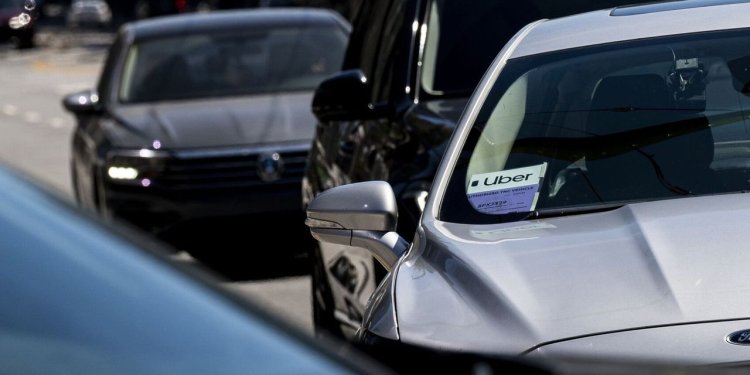Uber Is Firing on the Most Important Cylinders
Uber’s quarterly ride-share revenue jumped 72% year over year to $4.3 billion. Photo: David Paul Morris/Bloomberg News By Dan Gallagher May 2, 2023 11:32 am ET How well is Uber Technologies doing these days? Well enough that it can afford to be magnanimous. The ride-share giant had some kind words for its smaller and struggling rival Lyft on Tuesday. Addressing a question from an analyst on a conference call to discuss Uber’s first-quarter results Tuesday morning, Chief Executive Officer Dara Khosrowshahi called Lyft “a very, very strong brand.” And while conceding his competitor is “going through a lot of changes,” he added that Lyft is also “not going anywhere.” He added that he expects Lyft’s continued presence to set up a “const


Uber’s quarterly ride-share revenue jumped 72% year over year to $4.3 billion.
Photo: David Paul Morris/Bloomberg News
How well is Uber Technologies doing these days? Well enough that it can afford to be magnanimous.
The ride-share giant had some kind words for its smaller and struggling rival Lyft on Tuesday. Addressing a question from an analyst on a conference call to discuss Uber’s first-quarter results Tuesday morning, Chief Executive Officer Dara Khosrowshahi called Lyft “a very, very strong brand.” And while conceding his competitor is “going through a lot of changes,” he added that Lyft is also “not going anywhere.” He added that he expects Lyft’s continued presence to set up a “constructive competitive environment going forward,” one in which ride-share providers no longer chase market share at the expense of profitability. “Those days are over,” he said.

Lyft will get a chance to further spell out its direction under new boss David Risher when it reports its own results on Thursday. But ’s numbers Tuesday show what a tough road the smaller ride-share provider faces. In the area where the two companies compete most directly, Uber’s ride-share revenue jumped 72% year over year to $4.3 billion. Lyft expects to report revenue of $975 million—representing 11% growth year over year—for the same period.
Uber of course is about more than rides. Its meal-delivery business now accounts for a greater share of gross bookings, and revenue there rose 23% year over year. Gross bookings growth for both businesses accelerated from the December quarter, and Uber projected total gross bookings of $33.5 billion for the second quarter, which was 2% ahead of Wall Street’s projections.
As Mr. Khosrowshahi indicated though, growth at Uber no longer takes a back seat to profitability. The company delivered here as well, posting adjusted earnings before interest, taxes, depreciation and amortization of $761 million for the first quarter, which was 10% ahead of analysts’ forecasts. It projected that metric rising to a midpoint of $825 million for the second quarter, which was also ahead of consensus targets. Free cash flow of $549 million blew away Wall Street’s estimate by 25%. Uber’s stock—up 32% for the year already ahead of the results—jumped another 8% Tuesday morning.
Newsletter Sign-Up
Markets P.M.
Agenda-setting analysis and commentary on the biggest corporate and market stories from our Heard on the Street team.
Subscribe NowA theoretical turnaround at Lyft could certainly damp Uber’s growth. But Uber’s scale advantage, which allows for both rides and meal delivery over the same platform, is only getting more difficult for rivals to overcome. And its Uber One membership program seems to only be furthering that advantage. Launched in late 2021, the program allows for discounts on rides and meals and other perks for a monthly $9.99 fee. Mr. Khosrowshahi said Tuesday that Uber One now accounts for 27% of the company’s total gross bookings, with members spending four times as much on the platform as nonmembers do.
The only blemish on Uber’s recent results was its freight business. Revenue there slipped 23% year over year to $1.4 billion, with an adjusted Ebitda loss growing to $23 million from $8 million in the December quarter. Uber Chief Financial Officer Nelson Chai chalked up the poor performance to an “oversupplied market” post-Covid but also noted that the company raised external capital for the freight business and funds it separately. He noted that Uber has “a lot of optionality” around the freight business; Bloomberg reported in March that the company was considering a spinoff or initial public offering of the unit. That could prove a tough haul in the current market, but so long as Uber keeps focused on hungry people who also need to go places, freight shouldn’t weigh the company down.
Write to Dan Gallagher at [email protected]
What's Your Reaction?

















